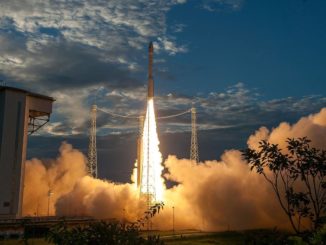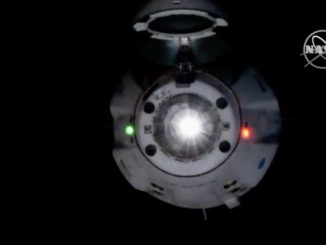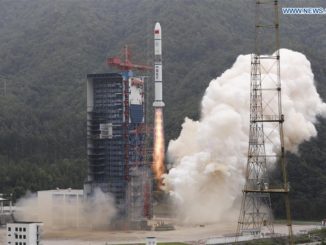EDITOR’S NOTE: Updated at 10:30 p.m. EST on Jan. 18 (0330 GMT on Jan. 19) with additional launch delay.
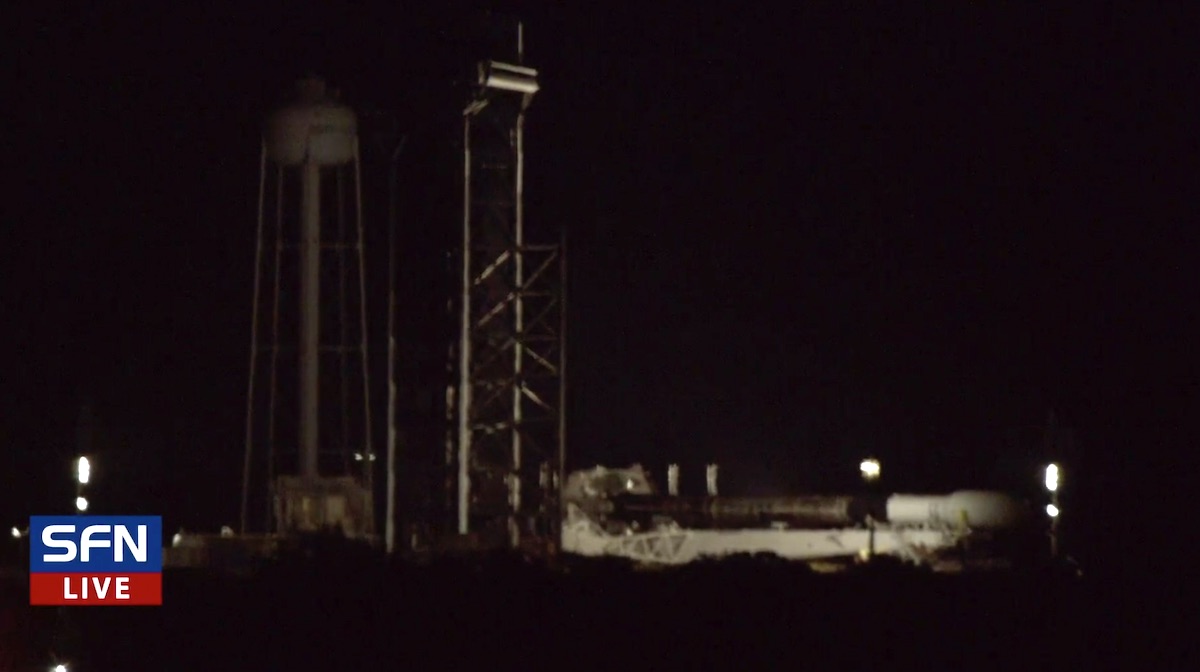
SpaceX rolled out a Falcon 9 rocket Sunday night to pad 39A at NASA’s Kennedy Space Center in Florida for liftoff with the next 60 Starlink internet satellites, but officials have pushed back the launch until Wednesday.
The mission is now scheduled to take off at 8:02 a.m. EST (1302 GMT) Wednesday from pad 39A, two days later than SpaceX originally announced. There is an instantaneous launch window Wednesday, when forecasters from the U.S. Space Force’s 45th Weather Squadron predict a 90% chance of good conditions for liftoff.
SpaceX announced Sunday night that the flight would be delayed from Monday to Tuesday to await improved weather in the offshore booster recovery zone. Another update from SpaceX Monday night said the mission had been pushed back again until Wednesday morning to “allow additional time for pre-launch inspections.”
The launch will set two rocket reuse records for SpaceX. The booster assigned to the next Starlink mission — designated B1051 — will be making its eighth flight to space, more than any other rocket in SpaceX’s fleet.
The rocket stage first launched from Florida in March 2019 on an unpiloted test flight of SpaceX’s Crew Dragon spacecraft, and landed on SpaceX’s drone ship in the Atlantic Ocean. It launched again in June 2019 from California with a trio of Canadian Radarsat satellites.
The booster has also launched four Starlink missions to date, and most recently flew to space Dec. 13 with the SXM 7 radio broadcasting satellite for SiriusXM.
On its eighth mission, assuming it takes off Wednesday, B1051 will haul up another 60 Starlink satellites just 38 days after its last flight, breaking the record for the shortest turnaround between flights of the same SpaceX booster.
Elon Musk, SpaceX’s founder and CEO, has said the newest version of the Falcon 9 booster — called the Block 5 — could fly 10 times without any major refurbishment, and perhaps 100 times with periodic overhauls. With as many as 48 Falcon 9 and Falcon Heavy flights planned in 2021, SpaceX seems poised to have at least one Falcon booster, and possibly more, reach the 10-flight milestone this year.
The launch Wednesday will be SpaceX’s second mission of the year, following the Jan. 7 launch of a Falcon 9 rocket with the Turksat 5A communications satellite. Meanwhile, SpaceX is readying another Falcon 9 rocket for launch from pad 40 at Cape Canaveral Space Force Station on a rideshare flight with dozens of small commercial and government satellites as soon as Thursday morning, the company’s third flight of 2021.
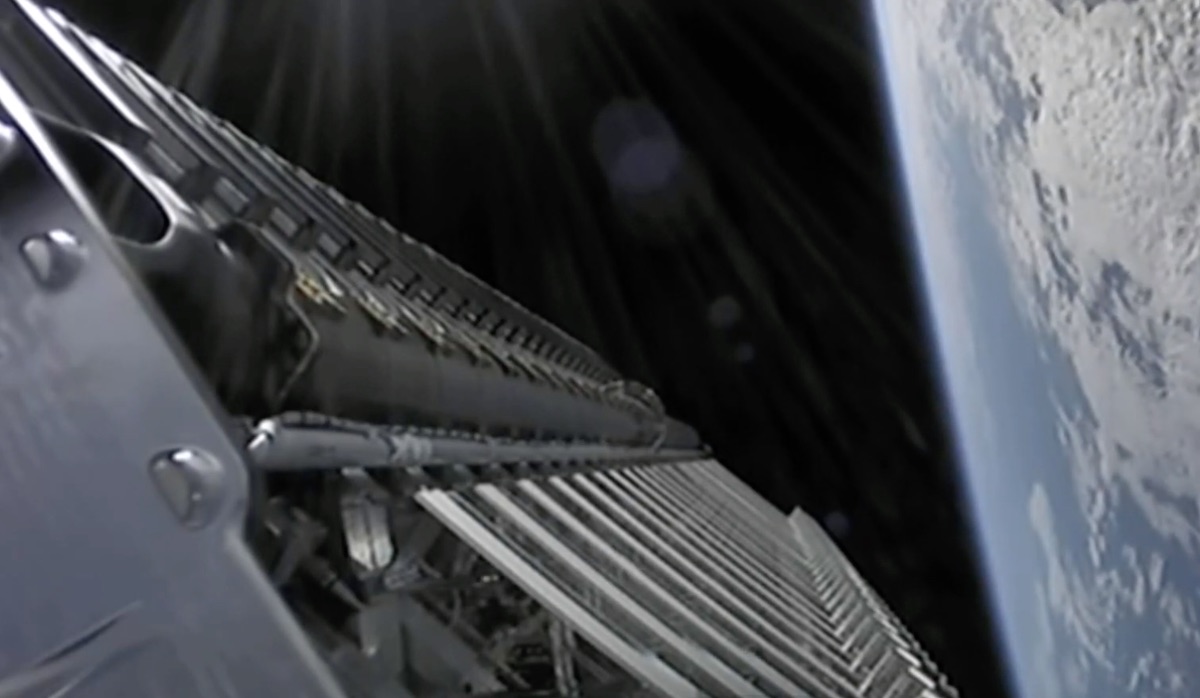
The 60 flat-panel Starlink broadband satellites aboard the Falcon 9 launch Wednesday will add to SpaceX’s growing network beaming internet signals around the world.
Powered by nine kerosene-fueled Merlin 1D engines, the Falcon 9 rocket will head northeast from Florida’s Space Coast after liftoff Wednesday. The first stage booster will shut down and separate from the Falcon 9’s second stage at T+plus 2 minutes, 36 seconds, followed by ignition of the upper stage’s single Merlin engine eight seconds later.
The rocket’s clamshell-like payload shroud, with both shells also reused from prior flights, will jettison at T+plus 3 minutes, 10 seconds. Two SpaceX recovery vessels in the Atlantic Ocean will also attempt to retrieve the fairing halves, which protect satellites during the initial climb through the atmosphere.
Meanwhile, the first stage will extend grid fins and orient itself to fall back into the atmosphere tail first, using restarts of some of its Merlin engines to guide itself toward SpaceX’s drone ship “Just Read the Instructions” parked nearly 400 miles (630 kilometers) downrange in the Atlantic Ocean.
The vertical landing of the first stage booster on the drone ship is scheduled at T+plus 8 minutes, 26 seconds.
The upper stage will reach a parking orbit after a concluding a six-minute burn at T+plus 8 minutes, 46 seconds, before coasting halfway around the world to set up for a brief one-second restart of the Merlin engine to position the Starlink satellites in the proper orbit for separation.
The Falcon 9 will deploy the 60 Starlink payloads 64 minutes after liftoff, and the satellites will unfurl solar panels and activate krypton ion thrusters to begin raising their altitude to 341 miles (550 kilometers). In that orbit, flying at an inclination of 53 degrees to the equator, the fresh Starlink platforms will join hundreds more SpaceX internet satellites.
With the 60 new satellites launching this week, SpaceX will have shot 1,015 Starlink spacecraft to date, including prototypes not intended for commercial service. The new satellites will give SpaceX a fleet of around 950 Starlinks currently in orbit, according to Jonathan McDowell, an astronomer at the Harvard-Smithsonian Center for Astrophysics who tracks global space activity.
The Starlink satellites are built by SpaceX in Redmond, Washington.
SpaceX plans to operate an initial block of around 1,500 Starlink satellites in orbits 341 miles above Earth. The company, founded by billionaire Elon Musk, has regulatory approval from the Federal Communications Commission to eventually field a fleet of up to 12,000 small Starlink broadband stations operating in Ku-band, Ka-band, and V-band frequencies.
SpaceX says the Starlink network — designed for low-latency internet service — has entered a beta testing phase in multiple U.S. states and Canada using its already-launched satellites. The U.S. military has also tested the Starlink internet service.
There are also preliminary plans for an even larger fleet of 30,000 additional Starlink satellites, but a network of that size has not been authorized by the FCC.
Email the author.
Follow Stephen Clark on Twitter: @StephenClark1.

